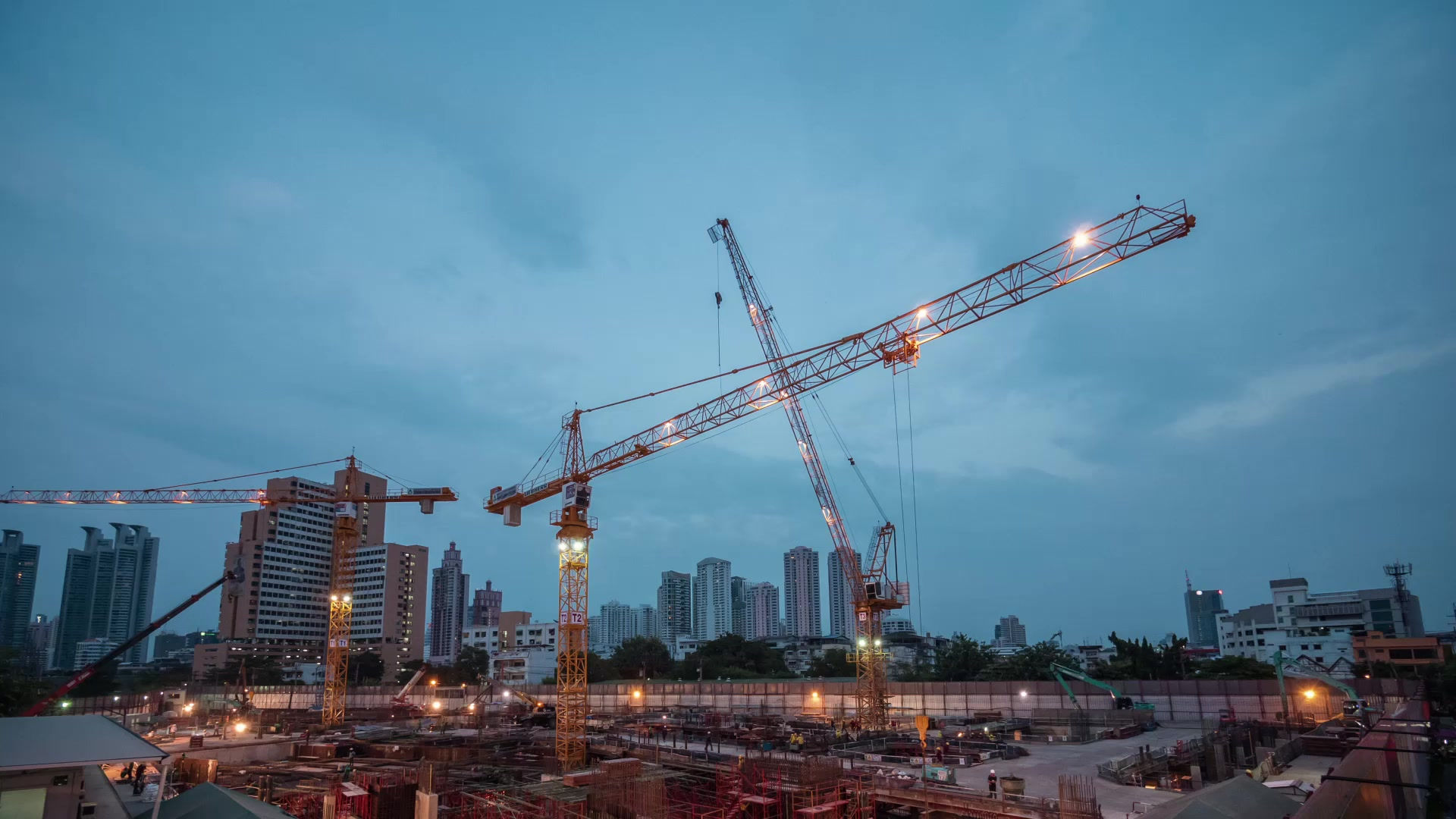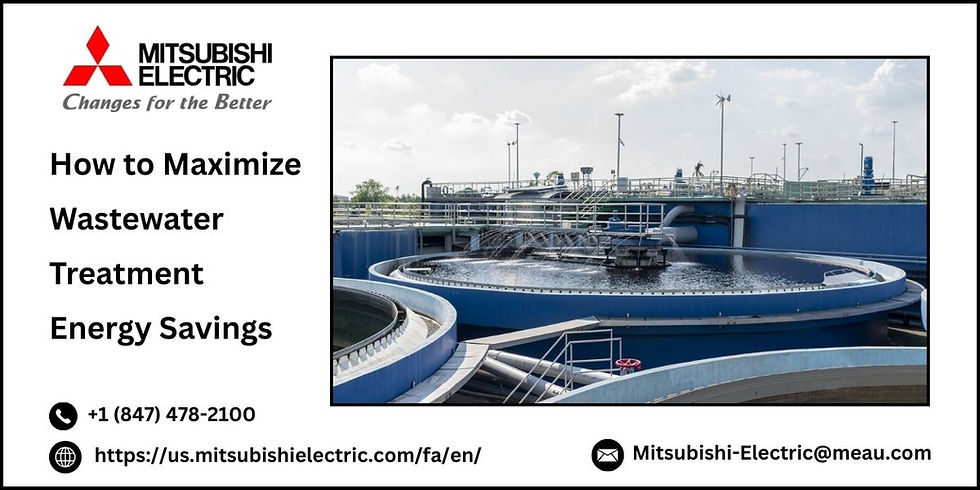Understanding Wastewater Treatment Pump Control And IT Sensors
- mitsubishielectric1
- May 29
- 3 min read

Wastewater treatment facilities are advancing by using pump control and Internet of Things (IoT) sensors in lift stations. Treating wastewater is difficult, uses a lot of energy and works best when pumping systems are reliable. Optimising performance, savings and avoiding faults involve wastewater treatment pump control systems, along with wastewater lift stations that now benefit from IoT sensors.
This blog discusses how the control of pumps plays a big role in treating wastewater and how smart lift station sensors based on the IoT are changing the industry.
The Use of Pump Control in Wastewater Management
Moving wastewater through the treatment system depends on pumps, which serve as the heart of any wastewater treatment facility. If pumps aren’t working, the system comes to a standstill, putting the environment at risk of receiving untreated sewage. Even so, pumps use the most energy in wastewater treatment, which is why energy savings and sustainability are mostly dependent on their correct and efficient use.
The job of wastewater treatment pump control is to modify and direct pump operations to keep flows, pressures and power use efficient. Certain parameters are important:
Water level: Making sure that pumps operate when the water level reaches decided points.
Stable movement through every treatment phase helps keep the flow constant.
Strain: Preserves system safety and stops pipe bursts.
Measuring runtime, the number of start and stop cycles and power use to pick up on any signs of inefficient performance or soon-to-happen failures.
Rather than using on/off switches, today’s pump control systems automatically adjust pump speed and operation according to input from sensors and automation. With a variable frequency drive, energy use is less, pumps last longer and the treatment is more reliable.
Wastewater Lift Stations and Why They Are Important
Lift stations are custom-designed pumping stations used to lift wastewater from lower to higher elevations, where gravity flow is not available. Lift stations are an integral component of municipal wastewater collection systems and are typically installed in inaccessible or remote areas.
Destructive lift station failure due to pump failure, power loss, or clogging can lead to sewer overflows, environmental pollution, and costly regulatory fines.
Therefore, continuous monitoring and management of lift stations are instrumental in public health and environmental regulation.
IoT Sensors: Transforming Wastewater Lift Station Monitoring
The installation of wastewater lift station IoT sensors has revolutionised the way utilities monitor and manage these facilities. IoT sensors offer real-time data on a range of parameters, including:
Water level: Ultrasonic or pressure sensors measure current levels, high/low levels, and rate of change.
Flow rate: Measuring inflow and outflow in order to measure system performance.
Pump status: Monitoring operating state, start/stop times, and runtime.
Pressure: Sounding anomalies that might point to blockage or leaks.
Advantages of IoT-Enabled Pump Control and Lift Station Monitoring
Pumping wastewater through the treatment process depends on pumps, the backbone of any wastewater plant. Without pumps running, the plant would not function, putting the environment at risk from untreated sewage. In spite of this, pumps use the most energy in wastewater treatment, thus energy efficiency and sustainability are quite much an issue of proper and optimal operation of pumps.
Operational Insights: Historical examination of data maximises pump scheduling, system design, and flow management.
Regulatory Compliance: Reporting and data logging benefit regulatory compliance and simplify auditing.
Remote Control: Remote start, stop, or control pumps and valves reduces on-site visits and increases safety.
IoT-Based Wastewater Pump Control System Components
A typical IoT-based wastewater pump control system includes:
Sensors: Water level, flow, pressure, temperature, and gas concentration measuring devices.
Data Transmission Modules: Solutions such as Wi-Fi, cellular, or LoRaWAN are used to send sensor data to control centres.
Control Units: PLCs or microcontrollers that remotely control pump operation from sensor inputs.
Cloud Platform: Centralised processing and storage hub for real-time visualisation, analytics, and alert management.
User Interface: Web and mobile applications providing dashboards for monitoring, control, and notifications.
Challenges and Considerations for Wastewater Lift Station IoT Sensors
The installation of IoT sensors and sophisticated pump controls in wastewater systems demands careful planning:
Legacy System Integration: Most plants have older equipment that can require upgrades or adapters for IoT capability.
Data Security: Keeping sensitive infrastructure data from cyber risks is critical.
Maintenance of Sensors: Periodic calibration and maintenance ensure reliability and accuracy.
First-Time Investment: Though providing long-term savings, IoT systems demand initial capital and technical know-how.
The Future of Wastewater Pump Control and Lift Station Operation
Emerging sensor technology, machine learning, and cloud computing are making wastewater management even more intelligent.
Conclusion
Wastewater pump control and wastewater lift station IoT sensors at lift stations are the operation drivers in wastewater systems today. With automatic control, real-time monitoring, and predictive maintenance, these technologies are making systems more reliable, cost-saving, and environmentally safe. With digital transformation now reaching wastewater, smart pump control and IoT-based lift stations will have an even greater impact on clean water and public health in the years to come.

.png)



Comments